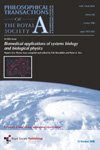"Transportation bio-fuels such as synfuel hydrocarbons or cellulosic ethanol, if produced from low-input biomass grown on agriculturally marginal land or from waste biomass, could provide much greater supplies and environmental benefits than food-based bio-fuels. "
Neither Bio-diesel nor Ethanol, bio-fuel can replace much petroleum without impacting food supplies.
Even dedicating all U.S. corn and soybean production to bio-fuels would meet only 12% of gasoline demand and 6% of diesel demand.
To be a viable alternative to current transportation fuel, a bio-fuel should provide:
- a net energy gain,
-have environmental benefits,
-be economically competitive, and
-be producible in large quantities without reducing food supplies.
These criteria were used in life-cycle accounting, by the research team from the University of Minnesota to evaluate, ethanol from corn grain and bio-diesel from soybeans.
They conclude that:
Transportation bio-fuels such as synfuel hydrocarbons or cellulosic ethanol, if produced from low-input biomass grown on agriculturally marginal land or from waste biomass, could provide much greater supplies and environmental benefits than food-based bio-fuels.
Bio-diesel provides sufficient environmental advantages to merit subsidy. (debatable)
Some Life Cycle Accountancy results:
Energy Efficiency
-Ethanol yields 25% more energy than the energy invested in its production, whereas
-Bio-diesel yields 93% more.
Green House Gases (GHG) and Pollutants:
Bio-diesel better than Ethanol :
-Bio-diesel releases just 1.0%, 8.3%, and 13% of the agricultural nitrogen, phosphorus, and pesticide pollutants, respectively, per net energy gain compared with ethanol.
Bio-diesel better than Ethanol better than Fossil Fuels:
-Relative to the fossil fuels they displace, greenhouse gas emissions are reduced 12% by the production and combustion of ethanol and 41% by bio-diesel.
-Bio-diesel also releases less air pollutants per net energy gain than ethanol.
These advantages of bio-diesel over ethanol come from lower agricultural inputs and more efficient conversion of feedstocks to fuel.
Negative environmental consequences of fossil fuels and concerns about petroleum supplies have spurred the search for renewable transportation bio-fuels. Until recent increases in petroleum prices, high production costs made bio-fuels unprofitable without subsidies.
My Comment:
That bio-diesel provides sufficient environmental advantages to merit subsidy requires careful reading of the research paper and important effort in communication globally especially with special consideration given to possible negative signals given on food stress.
Source:
PNAS Dec 2008
Contributed by David Tilman, June 2, 2006Environmental, economic, and energetic costs and benefits of bio-diesel and ethanol biofuels Jason Hill*,†,‡,§, Erik Nelson†, David Tilman*,§, Stephen Polasky*,†, and Douglas Tiffany† +Author Affiliations Departments of *Ecology, Evolution, and Behavior and †Applied Economics, University of Minnesota, St. Paul, MN 55108; and ‡Department of Biology, St. Olaf College, Northfield, MN 55057
On Social and Economic Spheres: An Observation of the “gantangan”
Indonesian tradition
-
Situngkir, Hokky and Prasetyo, Yanu Endar (2012) On Social and Economic
Spheres: An Observation of the “gantangan” Indonesian tradition.
[Departmental Tech...
13 years ago








